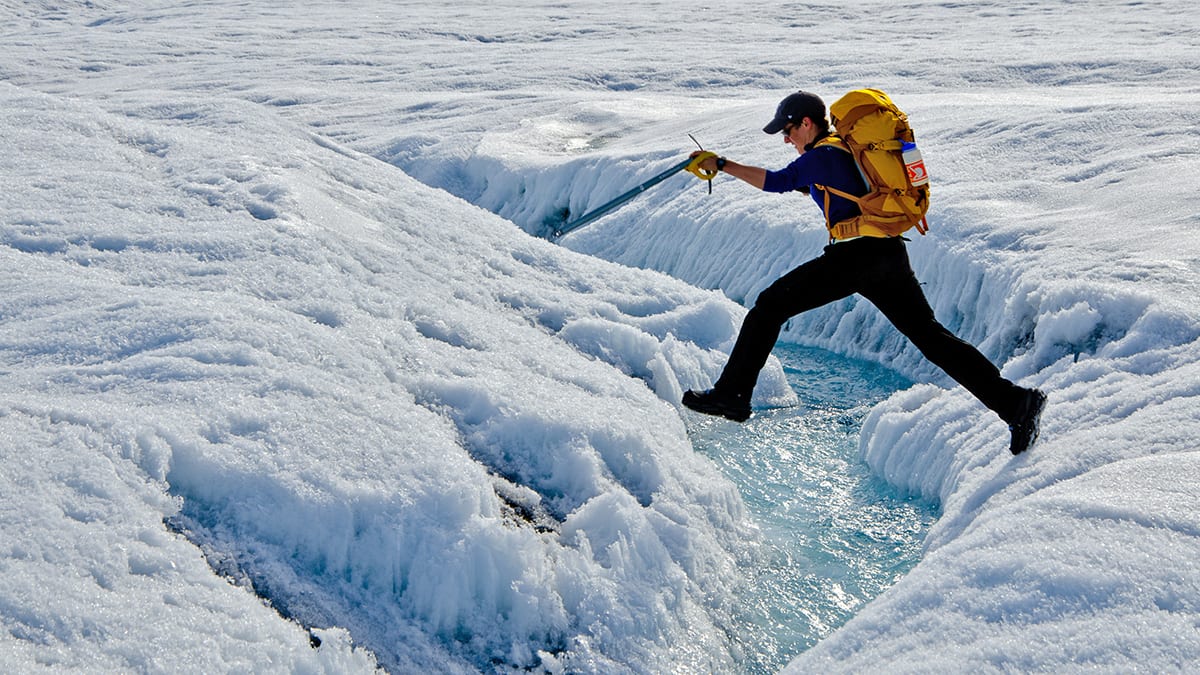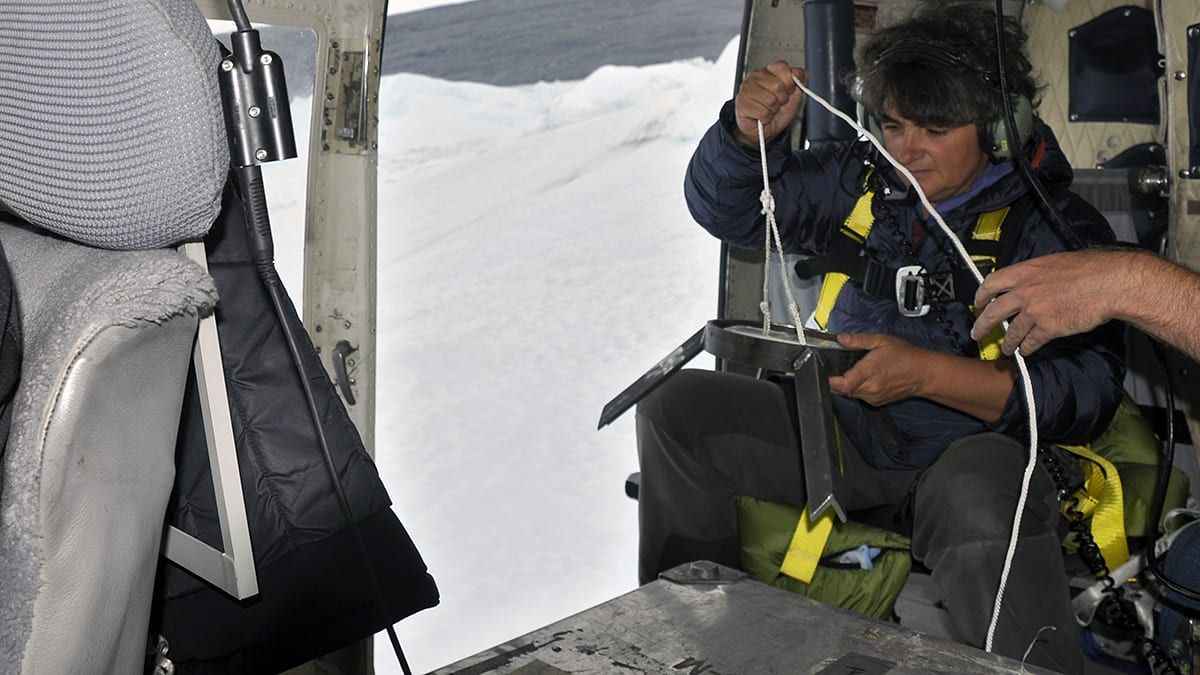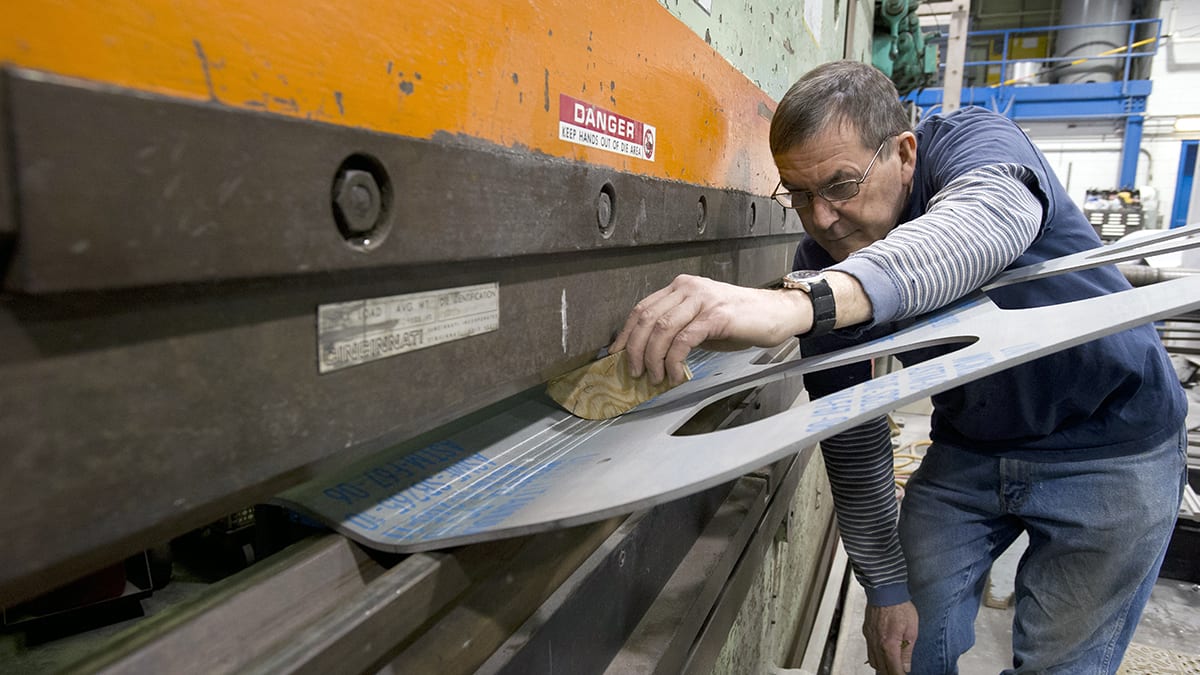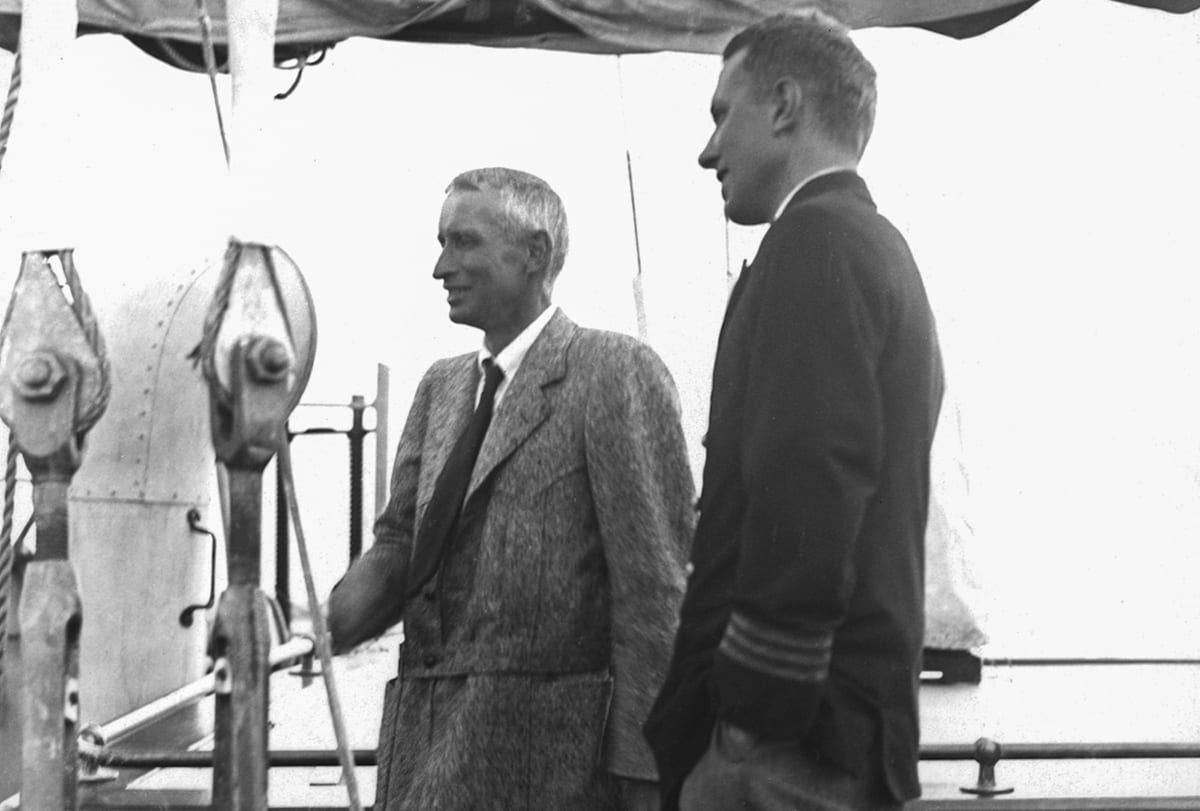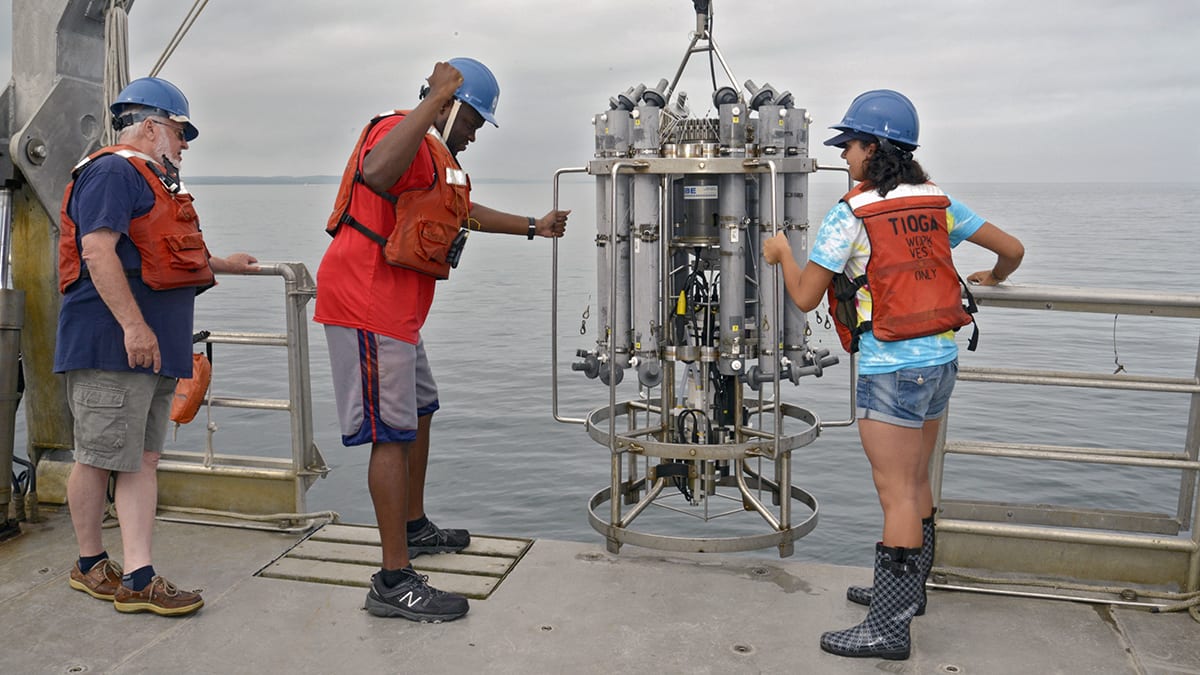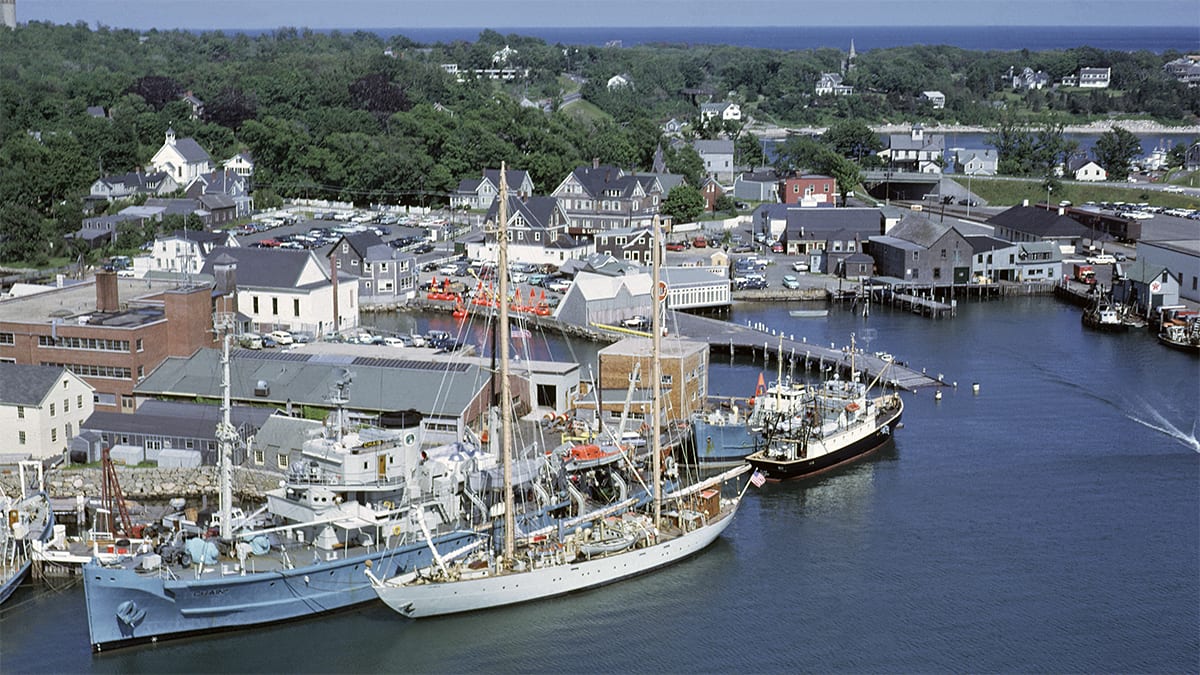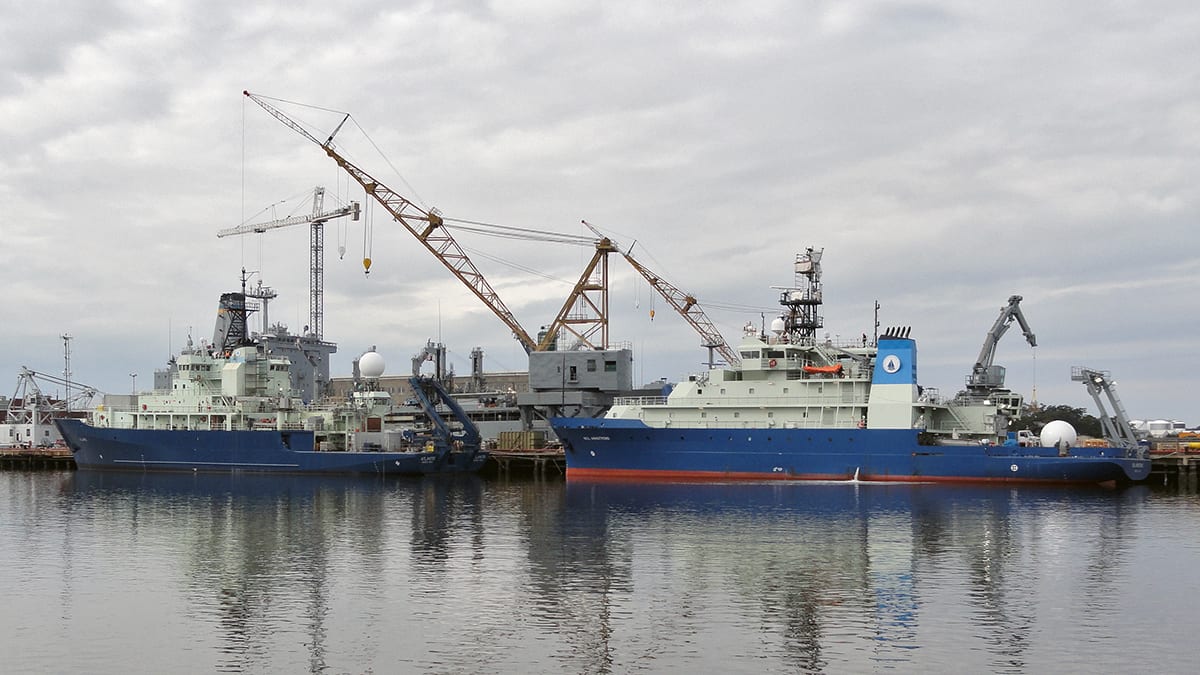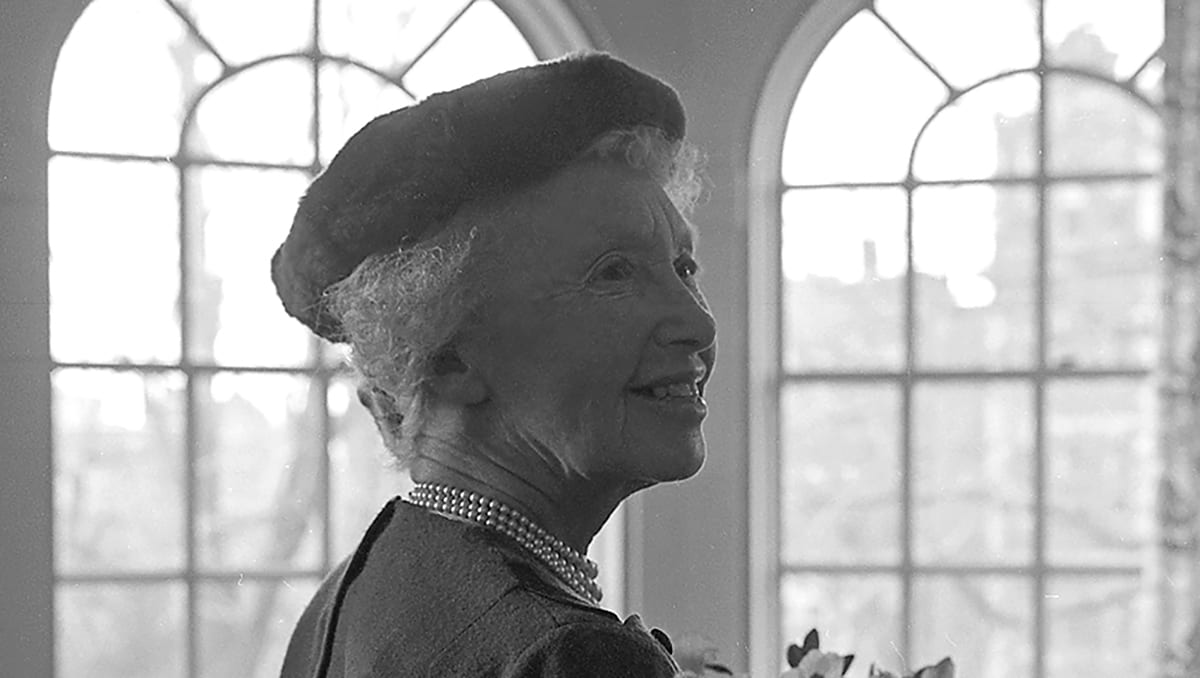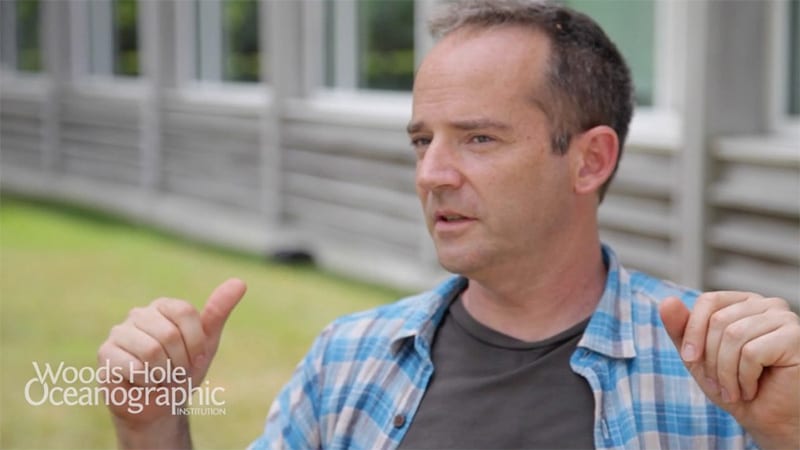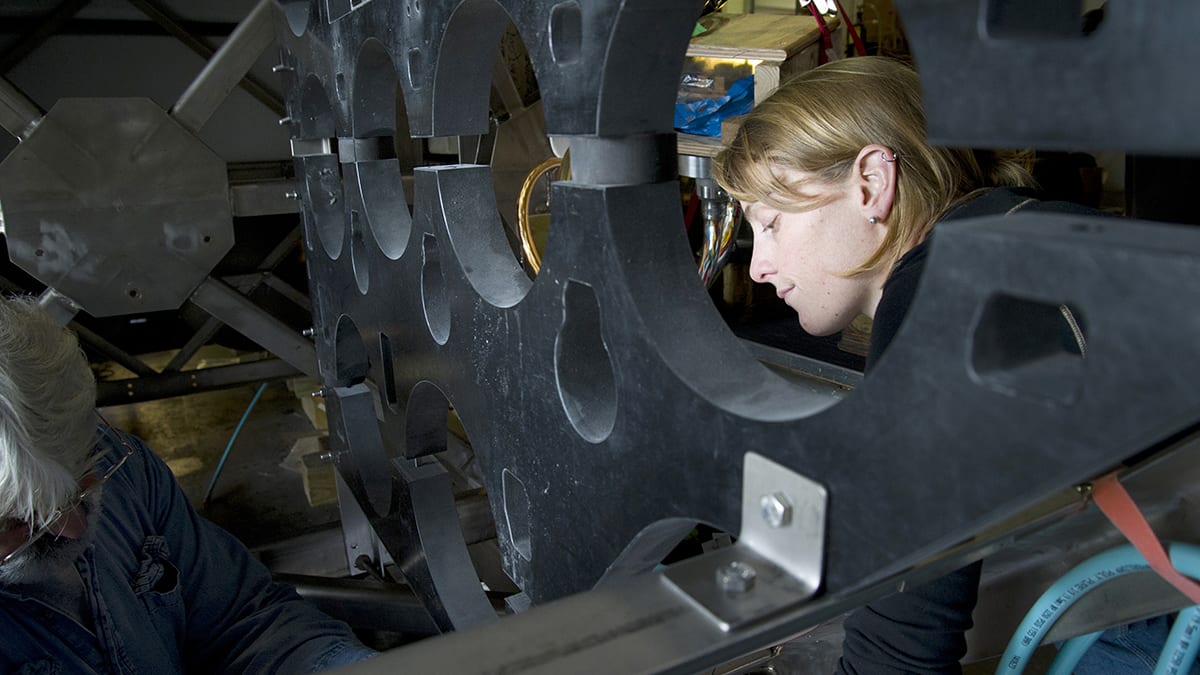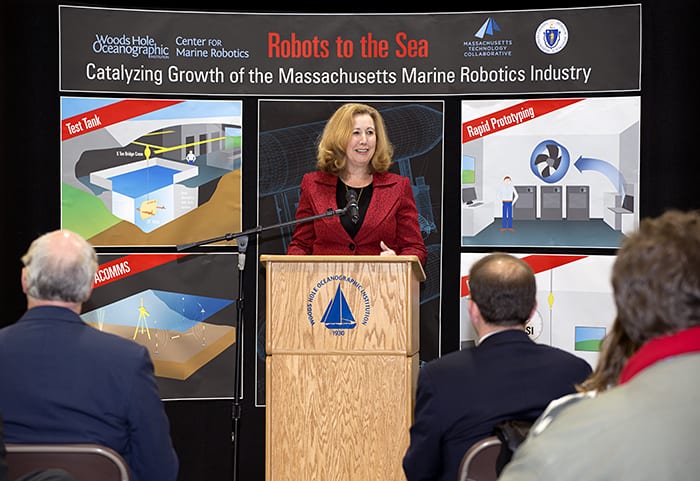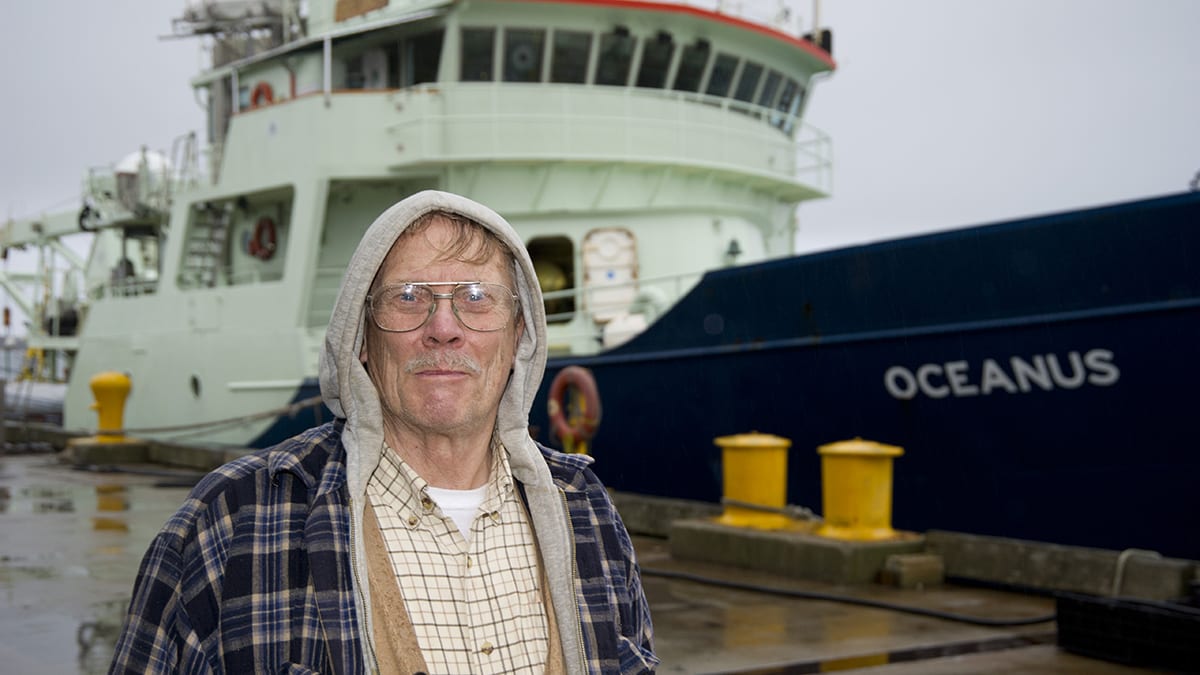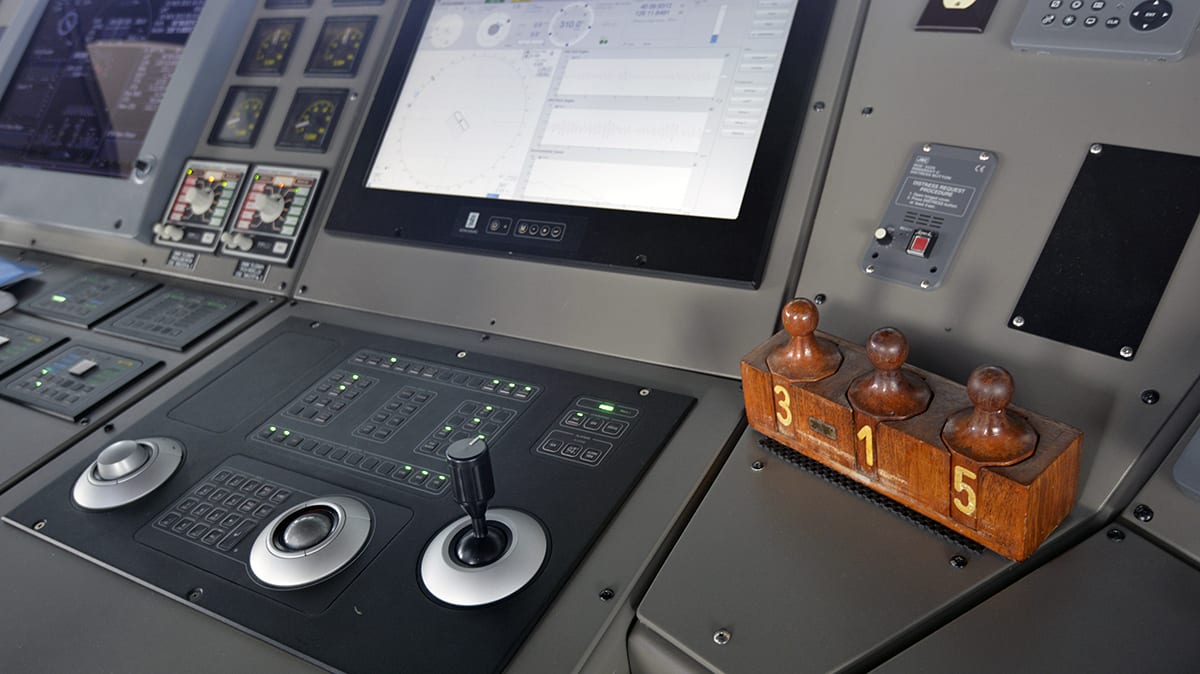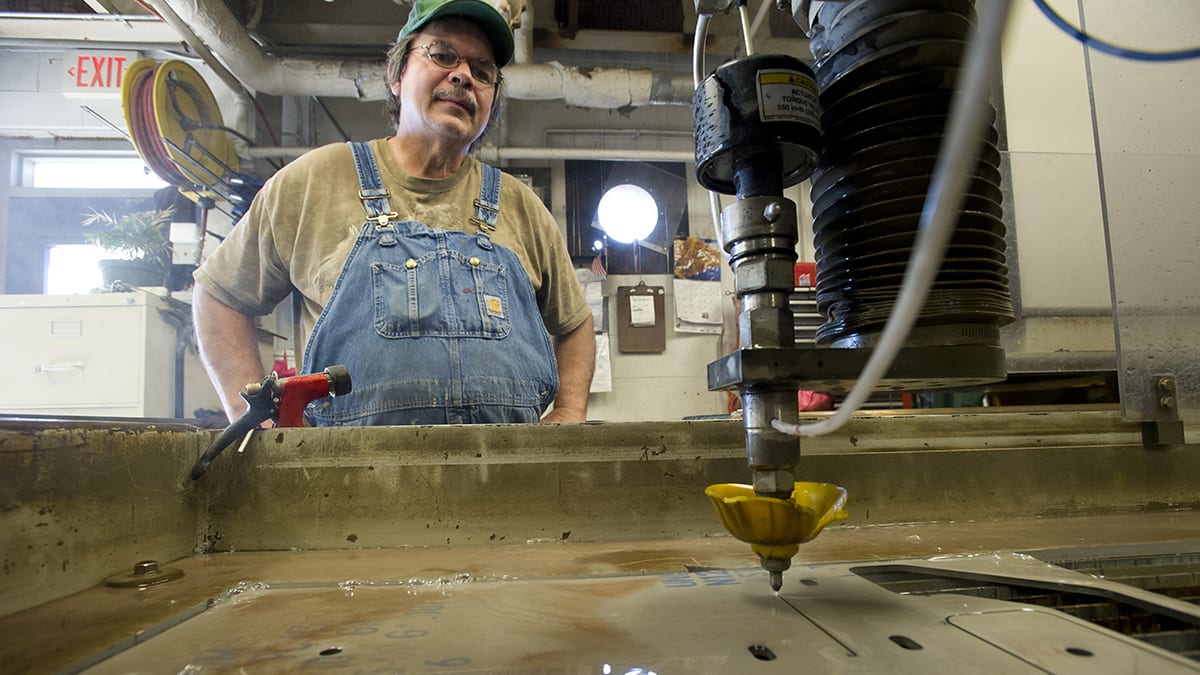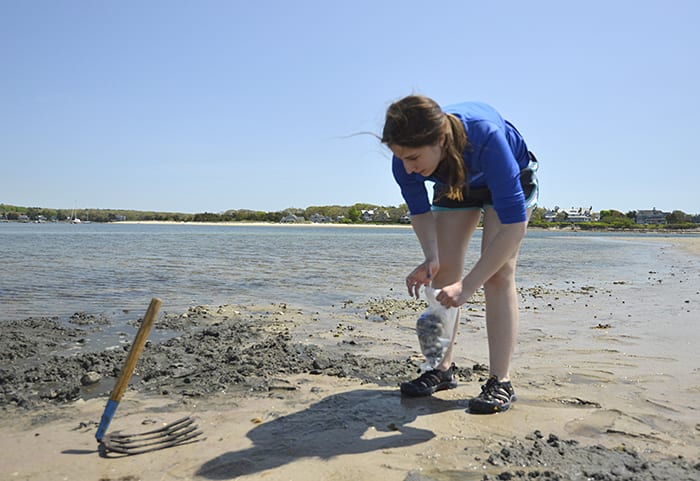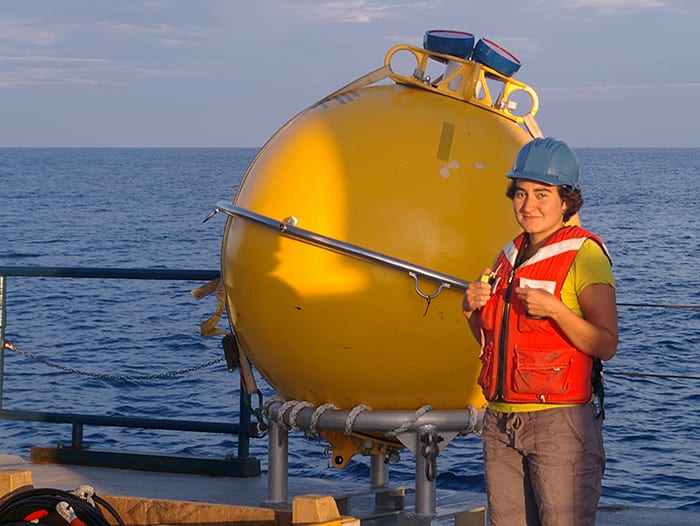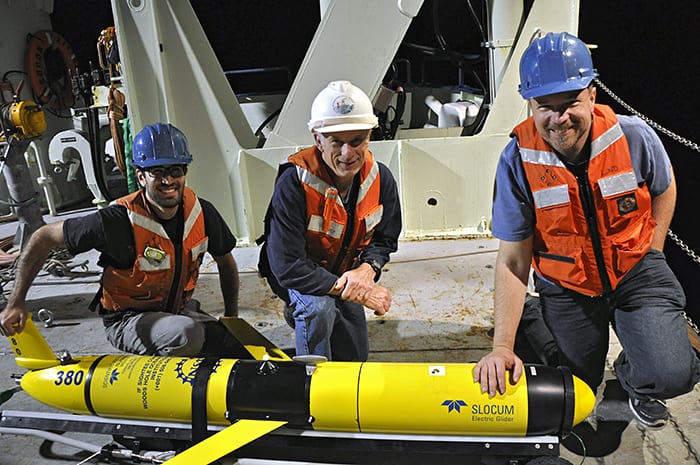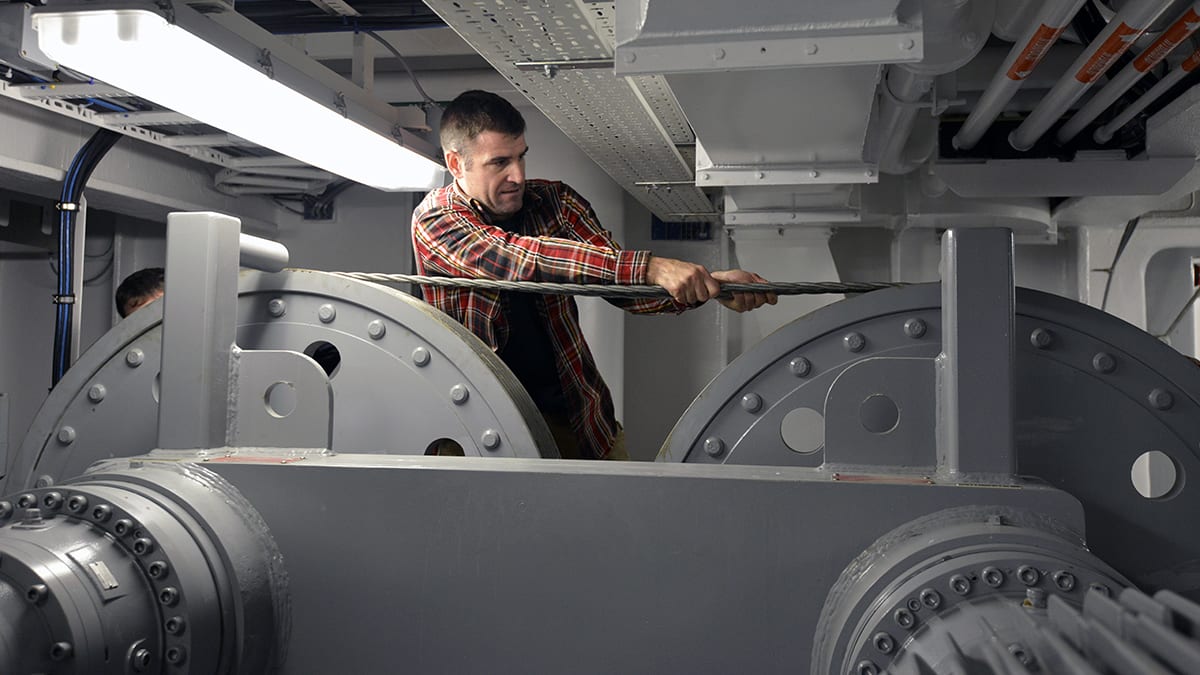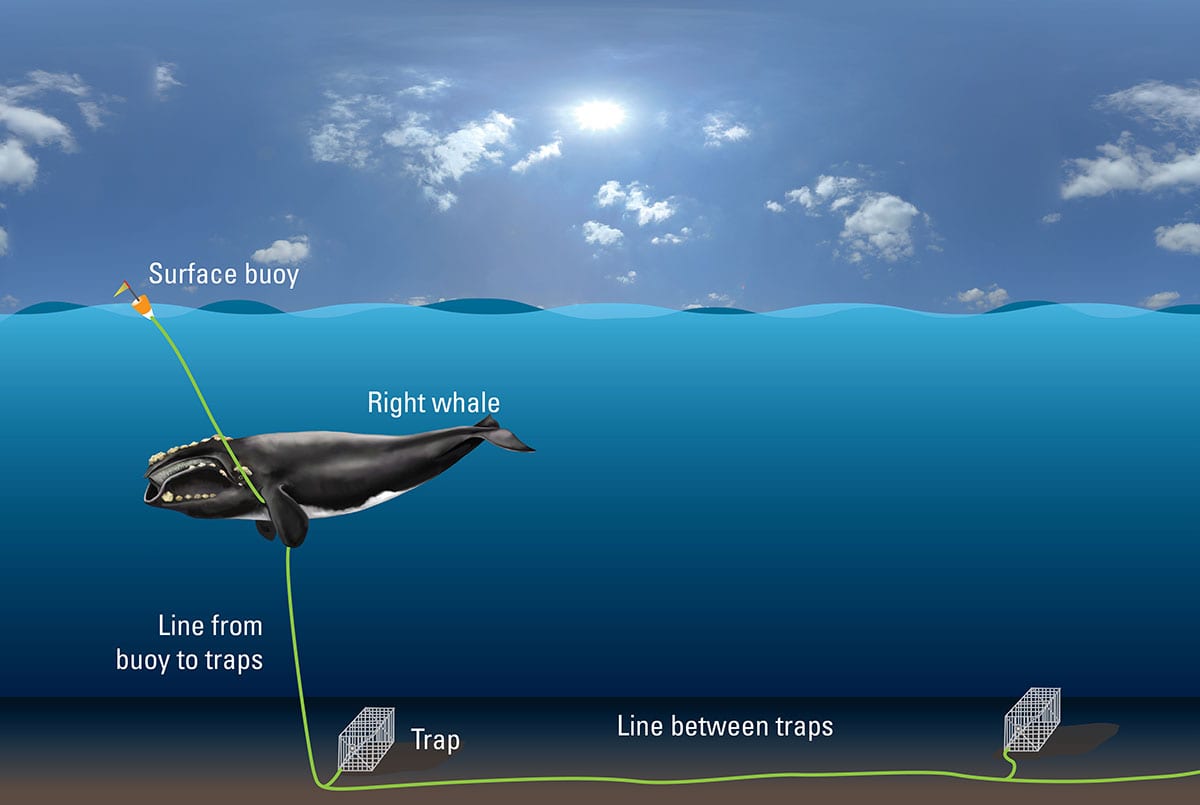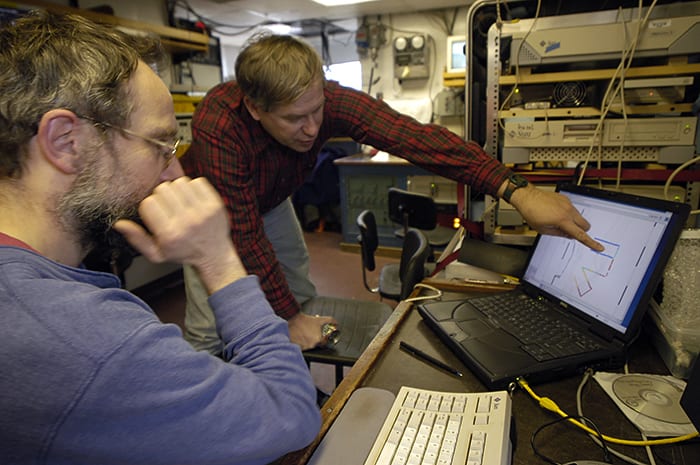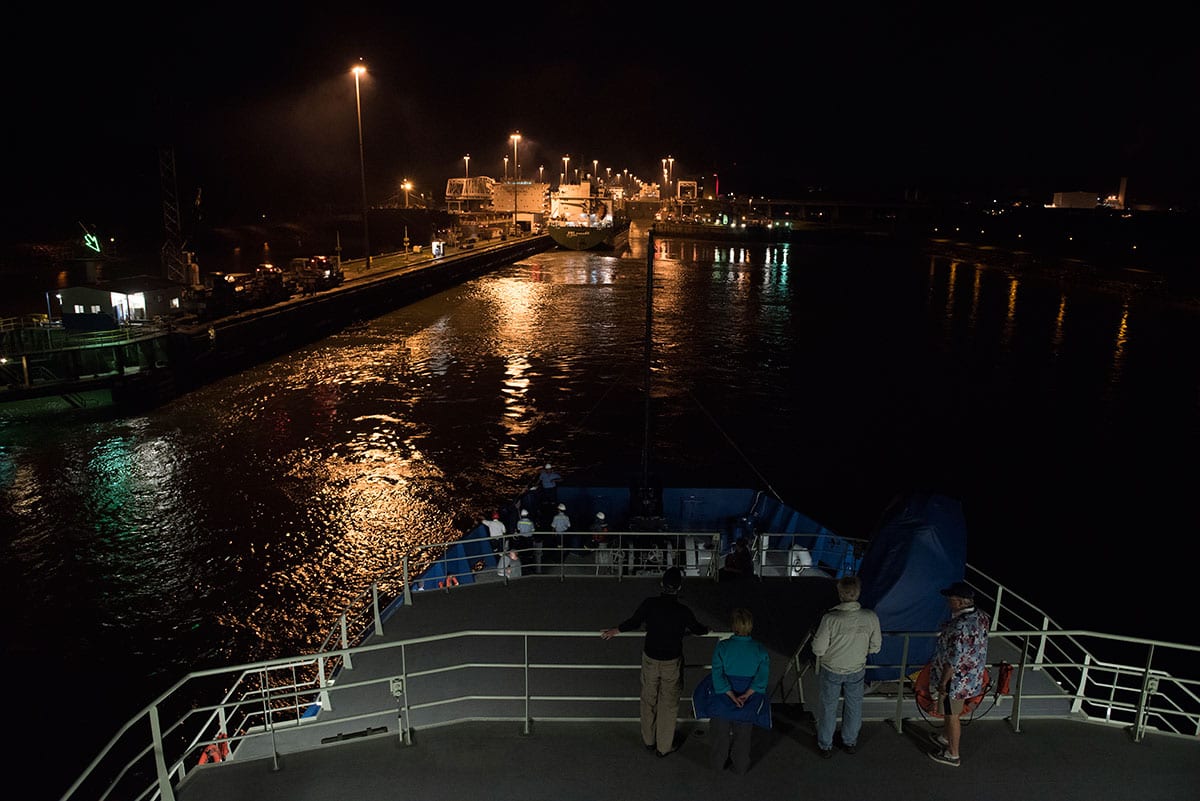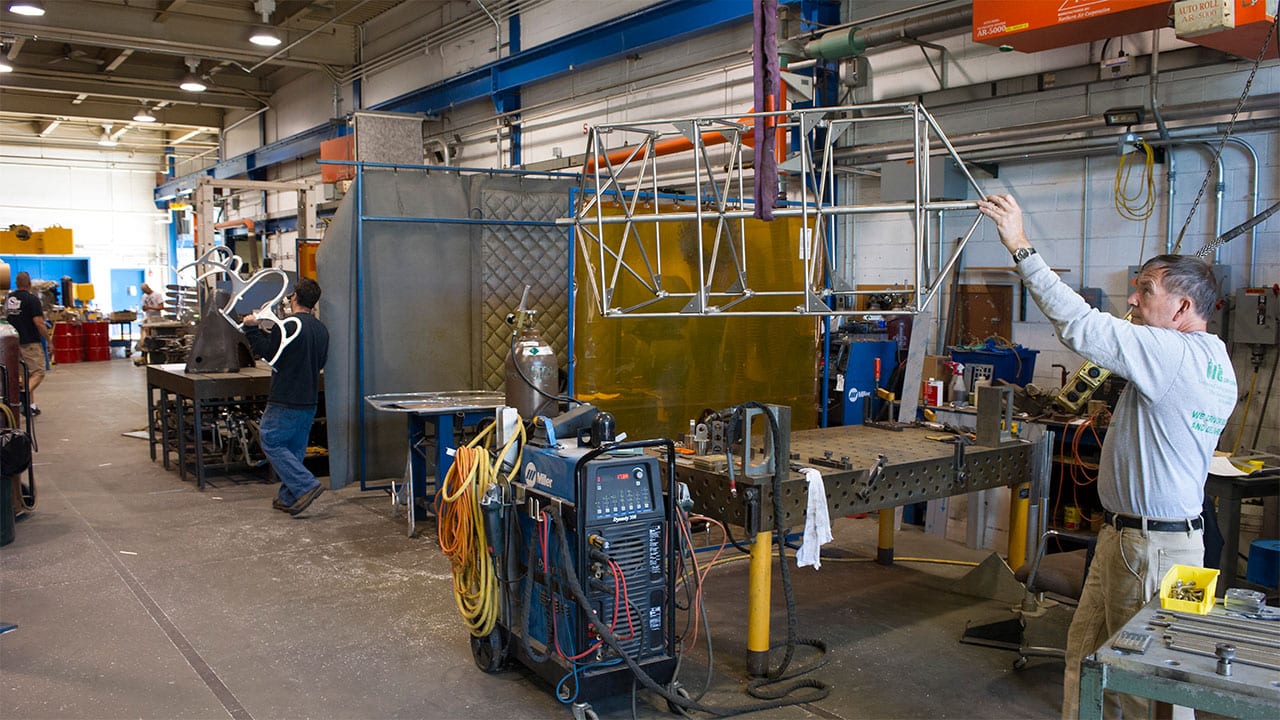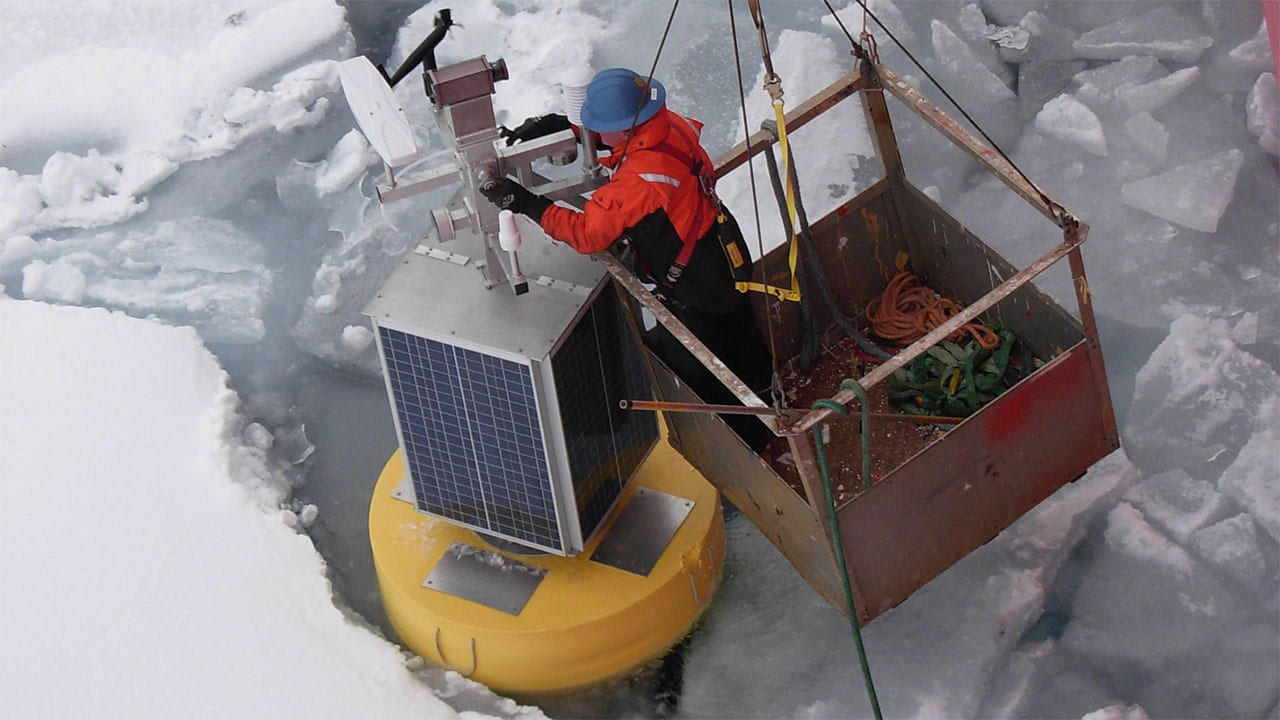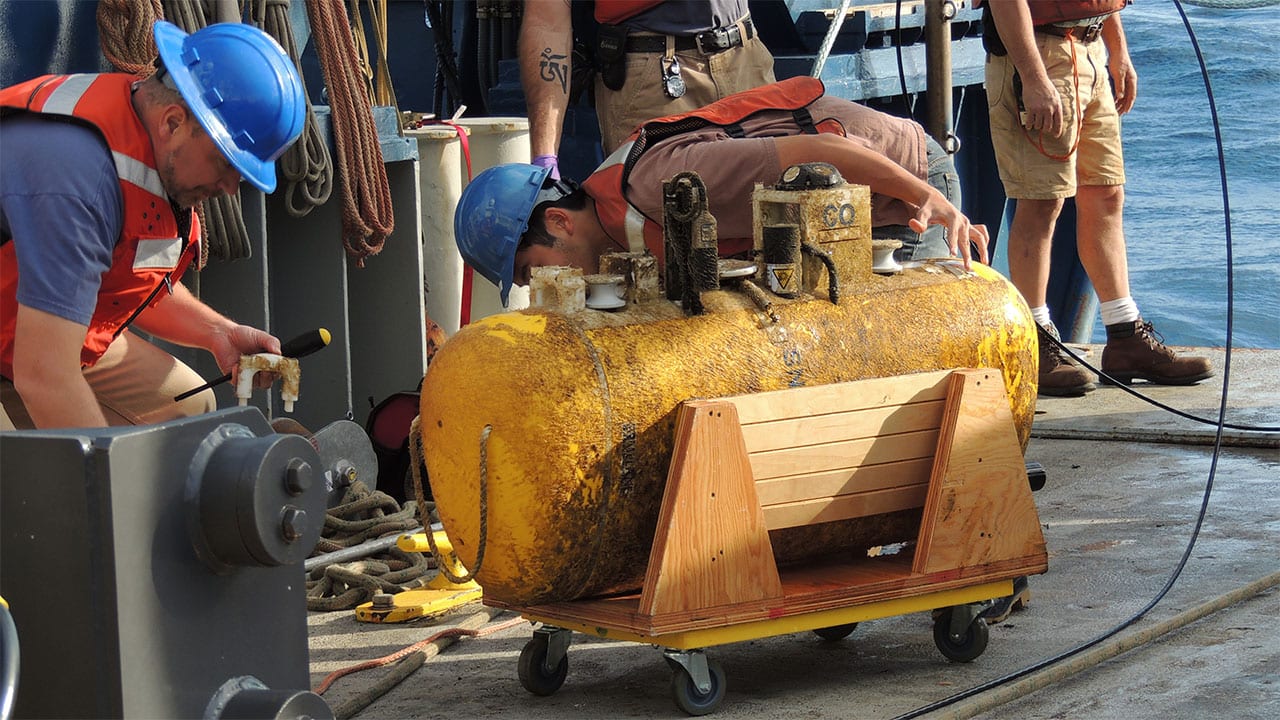Multimedia
Leap of Science
MIT-WHOI graduate student Laura Stevens leaps over a stream of meltwater on the Greenland Ice Sheet. Stevens was part of team (including WHOI scientists Sara Das, Mark Behn, and Jeff…
Read MoreLand, Sea, and Air
The increased flow of ice from glaciers in Greenland and Antarctica has tripled the contribution of continental ice sheets to global sea level rise over the last 20 years. Since 2008,…
Read MoreBrake Bend
WHOI Fabricator Paul Keith measures the curvature of a titanium panel used to hold flotation foam in place on the submersible Alvin. The grooves in the panel show where it…
Read MoreAll-weather Friends
Henry Bigelow (left) and Columbus Iselin—the founder and second director of WHOI, respectively—stand on the deck of the Institution’s first research vessel, Atlantis. Iselin was a student of Bigelow’s at the…
Read MoreDreams of Summers Past
WHOI 2015 Summer Student Fellows Jerry Fontus (Georgia Institute of Technology) and Julia Lanoue (Brown University) learned how to deploy a water sampling CTD rosette off the fantail of R/V…
Read MorePlanes, Trains & Ships
John F. Kennedy was president and summering in Hyannisport on Cape Cod when this photo of the original WHOI dock was taken in 1962. Pictured are four WHOI research vessels…
Read MoreWorks in Progress
R/V Atlantis (left) and R/V Neil Armstrong recently came out of drydock at Detyen’s Shipyards in Charleston, S.C. Atlantis was in for scheduled maintenance, while Neil Armstrong had the remainder of its science gear installed after sailing from Anacortes, Wash.,…
Read MoreAn Adventurous Life
This photo of Elizabeth Bigelow, wife of founding director of WHOI Henry Bigelow, was taken more than 60 years ago. The Bigelows were wed in 1906, a marriage that Henry…
Read MorePlastic in the Ocean
Plastics are the most common ocean debris, growing yearly. WHOI microbiologist Tracy Mincer discusses their impact and ways to fight plastic pollution.
Read MoreRack ’em Up
Engineer Loral O’Hara designed new racks to carry equipment on the upgraded Alvin, the nation’s deep-diving human-occupied research submersible. The racks hold pressure housings—the titanium bottles that house the electronics…
Read MoreAward for Robotics
Speaking at WHOI in December 2014, Pamela Goldberg, CEO of the Massachusetts Technology Collaborative (MTC), had high praise for WHOI’s Center for Marine Robotics (CMR) and its potential to spur…
Read MoreLooking Ahead
Over the course of nearly six decades at WHOI, Hartley Hoskins has been an integral part of the Institution’s fabric. He sailed on R/V Oceanus when the ship was delivered to…
Read MoreTraditions
The heading blocks that tell watchstanders on R/V Neil Armstrong the direction the ship is supposed to be traveling share a console with the slightly higher tech dynamic positioning control.…
Read MoreA Cut Above
WHOI machinist Timothy Kling cuts titanium into a component for the frame of the upgraded Alvin, the nation’s deep-diving human-occupied research submersible. He is using a water jet, which directs…
Read MoreRaking it In
A clam rake is the instrument of choice for MIT-WHOI joint program student Megan May as she hunts for clams at Little Island Beach in Falmouth. May is using genetic…
Read MoreCurrent Monitor
MIT-WHOI Joint Program student Isabela Le Bras stands in front of a flotation sphere on R/V Knorr in the North Atlantic. The sphere keeps a mooring, a string of instruments…
Read MoreGliding Away
WHOI scientist Al Plueddemann (center) and engineers Aidan Alai (left) and John Lund (right) prepare a glider for deployment. Gliders are autonomous underwater vehicles that moves through the ocean by changing their…
Read MoreWired Right
Derek Bergeron, relief chief mate for R/V Neil Armstrong, helped change wires while testing the main traction winch during the ship’s inaugural voyage from Anacortes, Washington to San Francisco in November. The…
Read MoreTangled Up
Entanglement in fishing gear is the leading cause of death for endangered North Atlantic right whales. When whales become tangled in fishing gear, such as buoys, and lobster and crab…
Read MoreSea Level Link
WHOI research specialist Frank Bahr (left) and physical oceanographer Glen Gawarkiewicz analyze data on currents collected off Cape Hatteras. Gawarkiewicz studies the currents along and across the continental shelf. Gawarkiewicz,…
Read MoreGet On Board
WHOI friends and supporters aboard the R/V Neil Armstrong during the ship’s 2015 inaugural trip, watched as the ship entered the Panama Canal. A part of the U.S. academic research fleet, R/V Neil Armstrong…
Read MoreMooring in the Making
WHOI welder and fabricator Paul Keith assembles a stainless steel cage for an acoustic modem that will be installed on an Ocean Observatories Initiative (OOI) sub-surface flanking mooring in the Argentine…
Read MoreIcy Recovery
John Kemp of the WHOI Mooring Operations, Engineering and Field Support Group is lowered in a crane-operated basket from the Canadian Coast Guard Ship Louis S. St. Laurent in 2015…
Read MoreProfiler Swap
Biofouling can be a serious problem for oceanographic equipment that spends any amount of time at the surface or in the upper ocean and was one of the reasons this…
Read More
